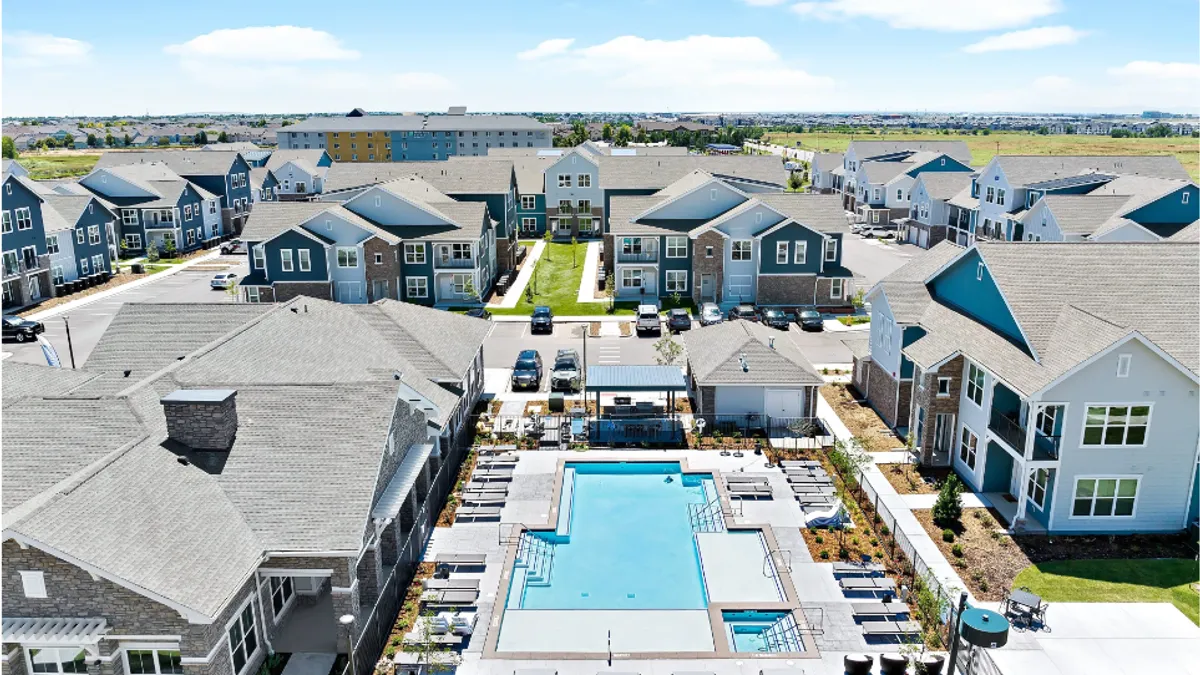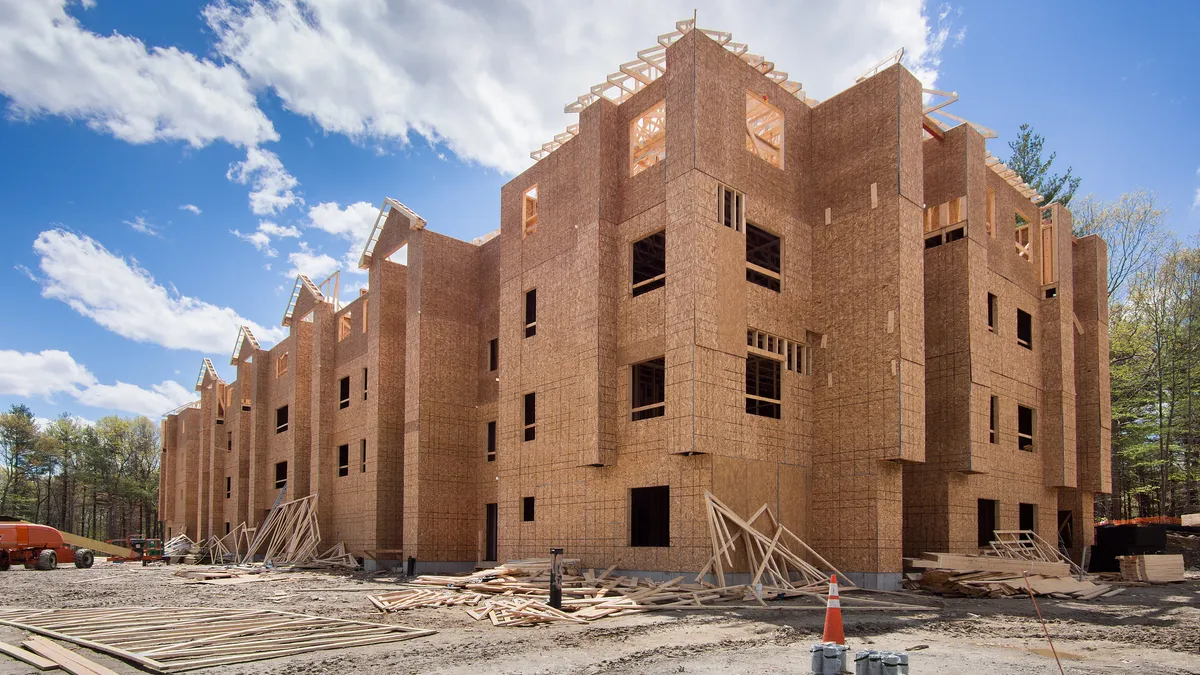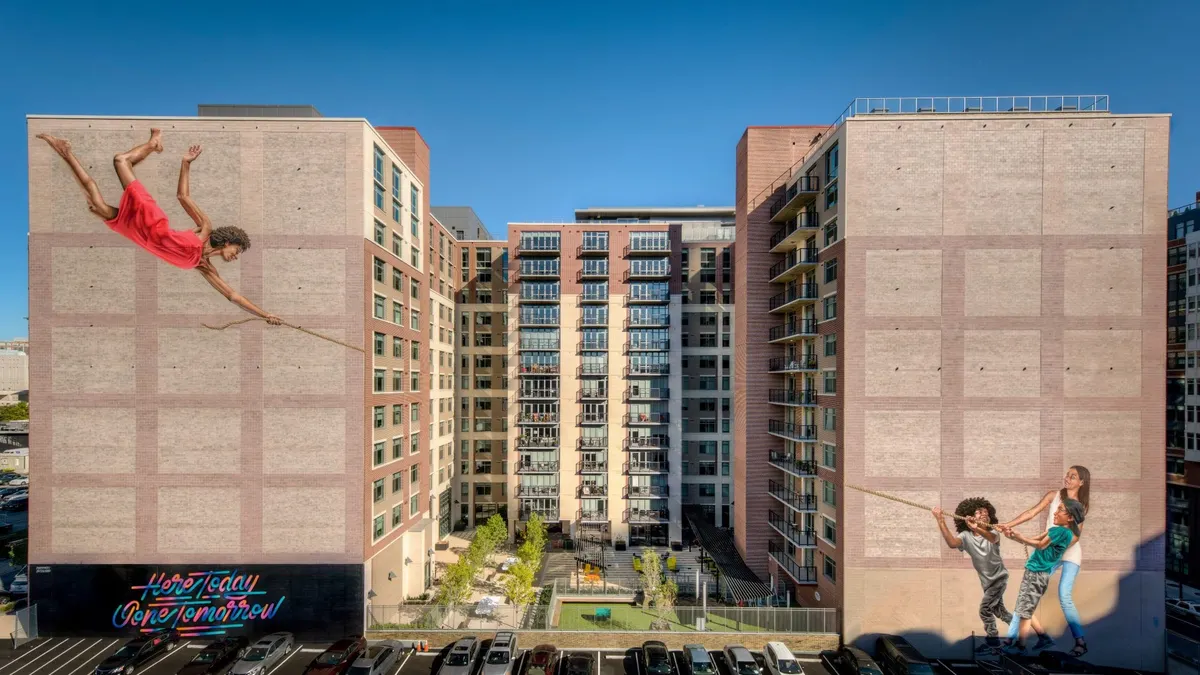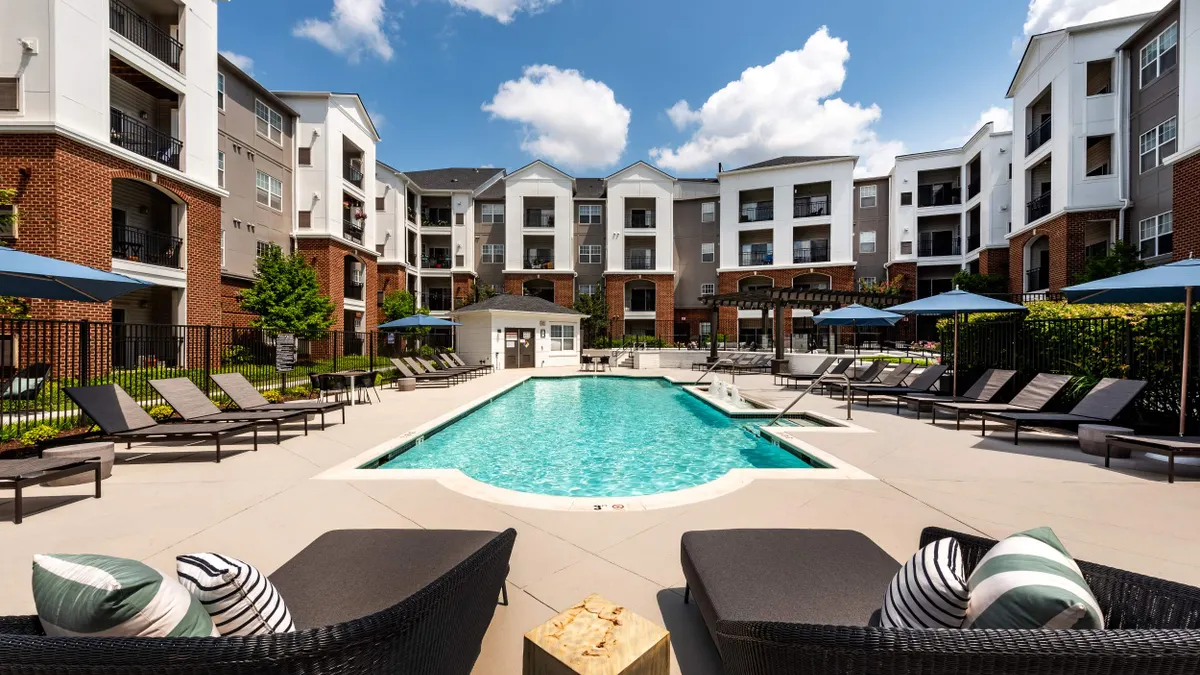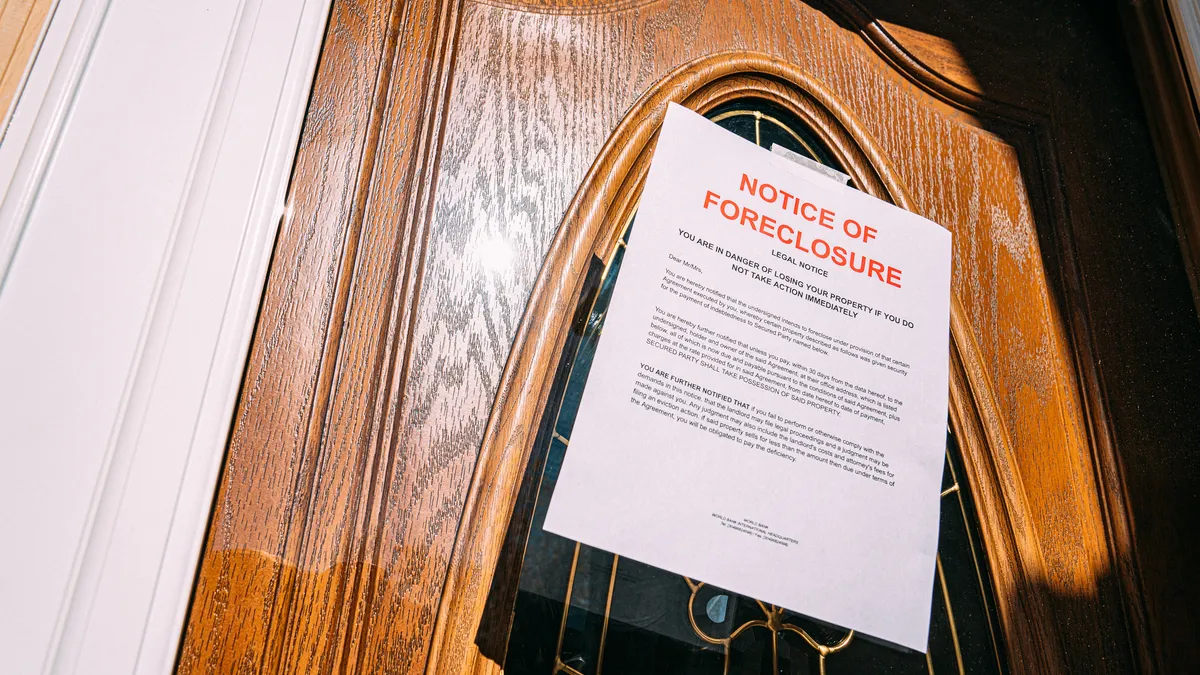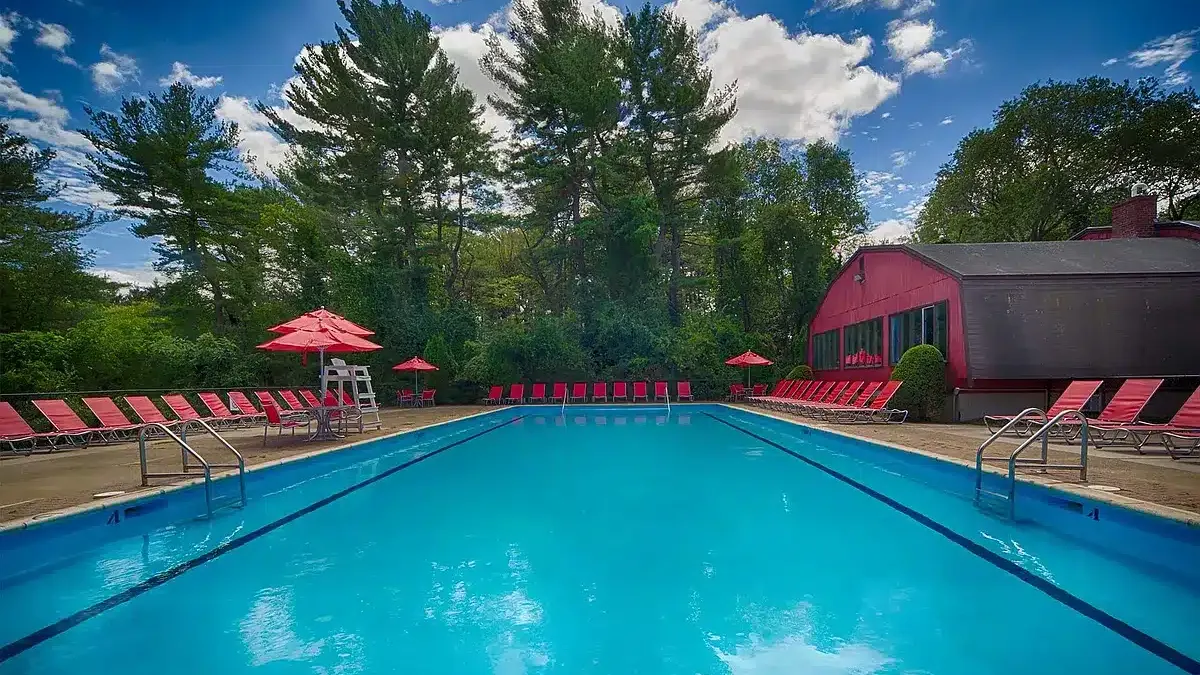Harbor Group International executives have assembled one of the biggest portfolios of apartments in the country, ranking No. 19 in the latest National Multifamily Housing Council Top 50 owners list.
As the Norfolk, Virginia-based apartment owner and manager has grown to 54,000 multifamily units, it has traditionally been “fairly agnostic to product type,” with a portfolio that includes everything from high-rises in Miami to single-story properties in the Midwest, Yisroel Berg, chief investment officer of multifamily at Harbor Group, told Multifamily Dive.
“We really kind of focus on the opportunity set when we're looking at investments,” Berg said.
Lately, that opportunity has been in newly built properties. Last year, the firm purchased two newly built projects in West Palm Beach, Florida: Pine Ridge and Locklyn West Palm. In December, it purchased The Statesman, a newly built 336-unit multifamily community in the northeast Atlanta suburb of Cumming, Georgia. It continued gobbling just-constructed assets this year, acquiring two newly developed properties, Ladora Modern and Prospector Modern, in Denver.
“We think buying newer products in well-located areas where there are very good fundamentals … is very attractive right now,” Berg said. “That is both as it relates to current replacement costs as well as what peak pricing was for either similar vintage assets or assets in the last five to six years.”
Harbor is traditionally a big game hunter, taking down multiple portfolios of nearly $2 billion and a handful of $1 billion portfolios. In 2023, those opportunities dried up, but Berg said he could see a slight rebound this year. Regardless, the firm is ready to move.
“We're trying to buy this year,” Berg said. “But we're going to be disciplined looking for where the opportunities are.”
Here, Berg talks with Multifamily Dive about the window for acquisitions, market competition and mounting supply.
This interview has been edited for brevity and clarity.
MULTIFAMILY DIVE: How long do you see this window for acquisitions staying open?
YISROEL BERG: Certainly, in last year’s transactions, we've definitely benefited from fewer buyers in the marketplace. That was a limited window. For deals we didn’t get, in some cases, you had a group of bidders, and someone outbid us. But a lot of times, the deal most likely didn’t trade if we weren’t able to get to a particular number, particularly on these newer assets.
But now that's changed a little bit. I think there are some more buyers, particularly some of the more well-heeled capital, back in the marketplace looking for newer product. So, that window seems to be shrinking a little bit.

But there is so much supply. There's a lot of this newer vintage product that needs to transact. So we feel good that the opportunity will be there. The question is if the pricing is still there if you put the new players into the market.
With the new buyers coming in, has the transaction market opened up this year?
I feel like things have certainly opened up a little bit. I go to the NMHC Annual Conference every year, and the general tenor, to me, felt like people were sick and tired of waiting around. Now, they’re trying to find the opportunities that work.
If you are looking closely enough, there's value to be had when you factor in some of the prices on what's available in the market today. So I think there’s definitely more capital in the market now than six or 12 months ago.
Are sellers more motivated to put deals on the market?
I think so. But part of that is because there's more capital. You have a little bit more conviction through a process that you'll get to where you need to get to.
It all changes, though. A few weeks ago, rates spiked, and then they came back down. Everything really kind of ebbs and flows. Today, with where the market is on the buy side, if you're a seller committed to selling, you'll have a market to be able to sell your asset.
Does the recent AIR-Blackstone deal provide clarity for the market?
There's not enough detail from a cap rate clearing standpoint that it can truly be a market-clearing price. But I think it does show that there's some conviction. Maybe we've reached a floor in some people's view on pricing. And, you don't want to miss out on an opportunity, particularly with some of these larger groups now back.
What markets do you see potential in right now?
The underlying market fundamentals are the most important thing we're looking at, and that’s going to be in-migration following employment.
A lot of these markets have had a lot of supply — record-breaking deliveries over the last 12 months. We’re anticipating this with our underwriting. We're not ignoring that potential choppiness over the next 12 to 24 months as units deliver.
For us, we're taking a medium- to long-term approach to these and buying good real estate. In most cases, we’re placing fixed-rate financing on them that will get through that choppiness. Then, we're sitting with a really strong asset in a strong location that's newly built, so you don't have capital issues and things of that nature. So, that's really been a subset that we've been seeking out more recently.
Click here to sign up to receive multifamily and apartment news like this article in your inbox every weekday.



